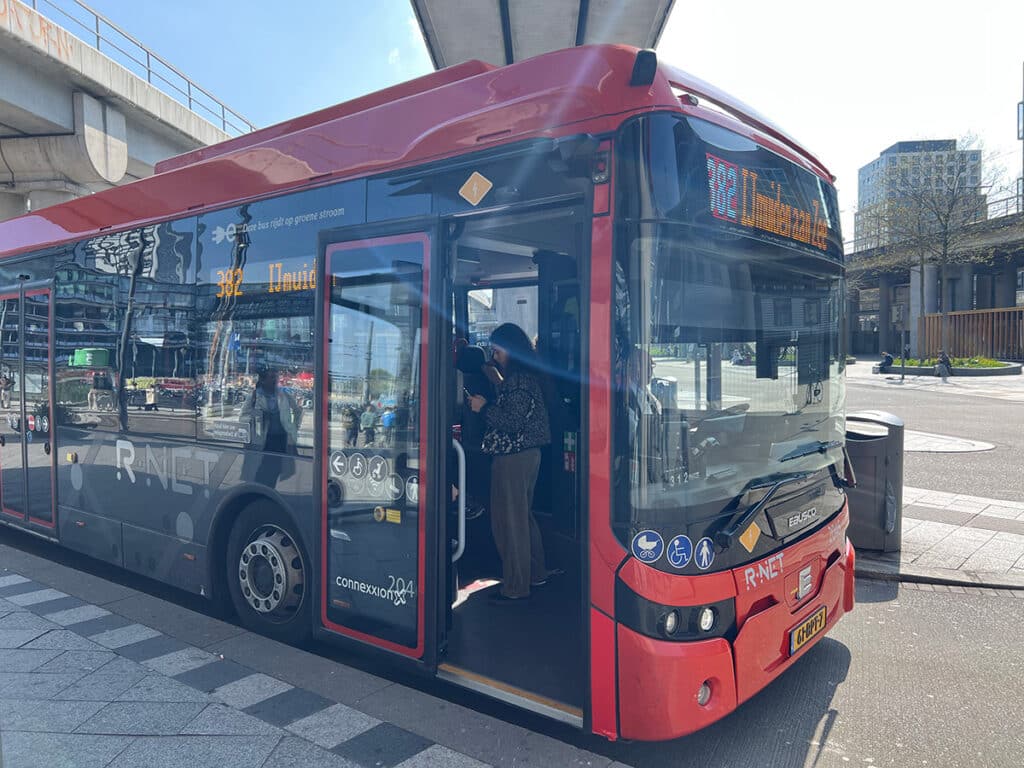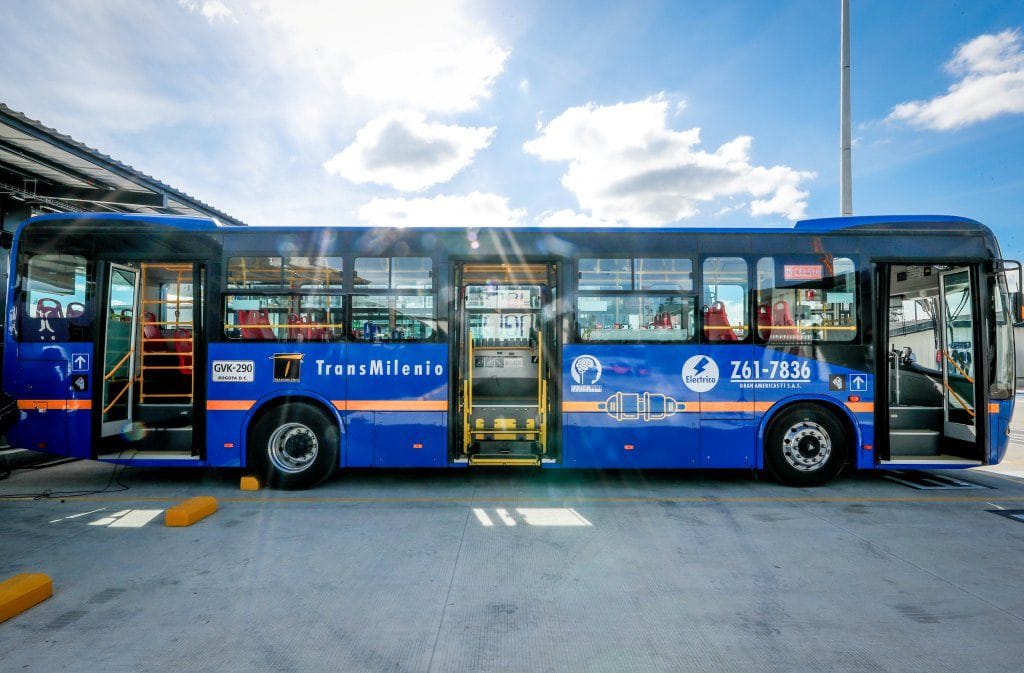Volcanoes are erupting in The Philippines, but on-fire Australia received some welcome rain. The Iran war cries have been called off and The Donald’s military powers are about to be hamstrung by the Senate. Meanwhile, his impeachment trial is starting, and we’re all on Twitter for a front-row seat.
What Could Go Right? The Electric Bus Revolution
City buses are going green in major hubs all over the world.
This is our weekly newsletter, What Could Go Right? Sign up here to receive it in your inbox every Thursday at 5am ET. You can read past issues here.
The Electric Bus Revolution
There is nothing like experiencing climate solutions firsthand to convince you that the transition is worth it. I’m currently spending a few months in the Netherlands, one of the European leaders for bus electrification. Here, along with Finland and Iceland, all new urban buses are electric.
Riding them is truly pleasant: they’re quiet, vibrate minimally, and leave no cloud of diesel exhaust in their wake, important to the many bikers here in the cycling capital of the world. They have long ranges—the full route of the line I use most often is nearly 100 kilometers (about 60 miles), and that is a quarter of what is possible for the battery—and seeing them “top up” at the depots is fun. They plug in, but on some buses, the battery can also pop out of the roof and connect to overhead electricity.

It’s not just the usual climate high achievers that are electrifying their buses. City buses are going green all over the world. Across the European Union, in 2024, nearly half of all new city buses were zero-emission, most of them battery-electric.
In terms of absolute numbers, China has topped the leaderboard for years. The country has over half a million battery-electric and hydrogen fuel buses on its roads, which is about 80 percent of its public buses, according to the Ministry of Transport. Accomplishing that feat took a mere ten years.
Chinese companies are also the manufacturers behind the cheap e-buses gaining ground across Latin America. Chile and Colombia are both aiming for all new bus sales to be electric by 2035, and their capitals—as well as Ecuador’s Quito, São Paulo, in Brazil, and Guadalajara, Mexico—already boast e-bus fleets in the thousands. A study of 32 Latin American cities expects the total number of e-buses there to rise to 25,000 by 2030, and 55,000 by 2050.

In late March, Delhi, India, announced plans to transition to e-buses. Mumbai is also looking to go all-electric by 2027, with the western Indian city hoping to swell its e-bus numbers to 8,000, from just over the 700 it has currently. Jakarta, Indonesia, one of the most polluted cities in the world, is also pushing to electrify its fleet of 10,000 buses, with the help of the United Nations. The city has some ways to go: it now has 300 e-buses in circulation.
Electric buses are even making their way into Africa, where Rwanda’s capital, Kigali, will receive its first batch of 28 e-buses in May, following a pilot program a handful of years ago. Rwanda and South Africa are both anticipating deliveries of over 100 e-buses by year’s end, from a Kenyan e-bus company that uses Chinese technology.
The International Energy Agency, in its 2024 conservative forecast scenario, estimated that e-bus sales will account for a third of global bus sales by 2035, and a fifth of all buses in operation. As of 2023, the global stock of e-buses numbered around 635,000.
What Could Go Right? S7 E8: Navigating and Negotiating the Middle East with Dr. Jon Alterman

What does the future of the Middle East look like? Zachary and Emma speak with Dr. Jon Alterman, senior vice president and director of the Middle East Program at the Center for Strategic and International Studies, where he holds the Brzezinski Chair in Global Security and Geostrategy. They discuss the complexities of achieving peace between Israel and Palestine, the evolution of a new Syria, and the socioeconomic growth of many Gulf states, particularly Saudi Arabia. Dr. Alterman also touches on the resilience of the Iranian regime and other regimes fueled by oil. | Listen now
By the Numbers
22: The amount, in gigawatts, of solar power that Pakistan imported in 2024, more than Canada has installed in total.
50%: The drop in Paris’ air pollution since 2005, due to the city’s radical bike-friendly transformation.
79%: The share of Kenya’s population that has access to electricity, up from 37% in 2013. The East African country is aiming for 100% by 2030.
120K: The number of New Mexicans who were lifted above the poverty line after New Mexico became the first state in the US, in 2021, to offer free childcare to the majority of families. (The initiative is funded mostly by the state’s oil and gas revenue.)
Quick Hits
👽 NASA’s James Webb telescope has detected a doozy: a giant planet 124 light-years away from Earth that appears to have signs of life—specifically, two chemicals that are produced by marine phytoplankton here on Earth. (Does this mean that aliens are out there? We recommend this Substack read to put the discovery into context.)
🧫 Japan, a hub for regenerative medicine, could as soon as this year become the first country to approve a treatment that uses iPS cells, cells that can be “reprogrammed” to do anything from cure blindness to treat Parkinson’s disease. Unlike embryonic stem cells, iPS cells don’t require the destruction of human embryos, and because they are taken from the patient requiring treatment, a transplant can be done with them without the need for drugs that prevent the immune system from rejecting the tissue.
🦜 One of Brazil’s rarest parrots has recovered enough for the species to be moved from “endangered” to “near threatened” status, the only case of its kind in Brazil. The key was the installation of artificial nests on an island where the parrots live.
📉 Over 20 years of vaccination campaigns have led to the dramatic decline of the under-five mortality rate in the East African country of Burundi, from 143 deaths per 1,000 live births to 50. (That rate would need to be halved in order to meet the United Nations’ ambitious sustainable development goal for this area by 2030.)
🦑 Scientists have never spotted a colossal squid, which can grow up to 23 feet long, in its natural environment—unless two arm fragments found in 1925 in the belly of a sperm whale count. Last month, however, a team of researchers in the South Atlantic Ocean finally caught one on camera. It was a baby colossal squid, whose bodies are transparent.
🦈 The fisheries law enforcement agency in the US is piloting a new technology, which operates like a Covid rapid test, to detect illegally trafficked fish in real time. It eliminates the need to send out samples to a lab for genetic analysis, a process that can take up to two weeks.
🕵️ In early April, the US Department of Justice announced that it will send staff to ten states in order to investigate unsolved crimes related to missing Indigenous persons and murder cases. “The operation is the most substantial use of FBI resources to target crime in Indian Country, according to the department,” reports Sahan Journal.
☀️ The ambition is there, but will the execution be? Vietnam has revealed a new clean energy policy that calls for a massive expansion in wind and solar capacity as well as the end of coal use by 2050.
💉 Cervical cancer may disappear in some rich countries within the next decade—Sweden may eliminate the cancer by 2027, and places like Australia and the United States, and most recently, Denmark, are hot on its heels. Meanwhile, the global health partnership GAVI is on track to vaccinate 86 million girls against HPV in 2025, in poor countries like Côte d’Ivoire where cervical cancer remains common.
🔞 Portugal and Kuwait have raised the minimum legal age of marriage to 18.
💡 Editor’s pick: Trust in science is the new marker of partisan politics. What can scientific institutions themselves do to regain trust on the right side of the aisle?
TPN Member Originals
(Who are our Members? Get to know them.)
- I have never been more afraid for my country’s future | NYT ($) | Thomas L. Friedman
- What’s happening is not normal. America needs an uprising that is not normal. | NYT ($) | David Brooks
- Trump’s Harvard whiplash | The Atlantic ($) | Thomas Chatterton Williams
- American backsliding, Trump-Xi standoff, Iran bombing, and more | GZERO | Ian Bremmer
- Don’t ignore Republicans’ awful budget | Slow Boring | Matthew Yglesias
- Tariff terrorism | Diane Francis | Diane Francis
- The SAVE Act: Separating truth from fiction | Tangle | Isaac Saul
- You can’t step into the same river twice | The Edgy Optimist | Zachary Karabell
- Space tourist Katy Perry, hero of progress | Faster, Please! | James Pethokoukis
- The key to critical self-awareness | The Atlantic ($) | Arthur C. Brooks
- Schools don’t know how well cell phone policies are working. You can help. | After Babel | Angela Duckworth
- Why is it so hard to talk about God? | NYT ($) | Krista Tippett


